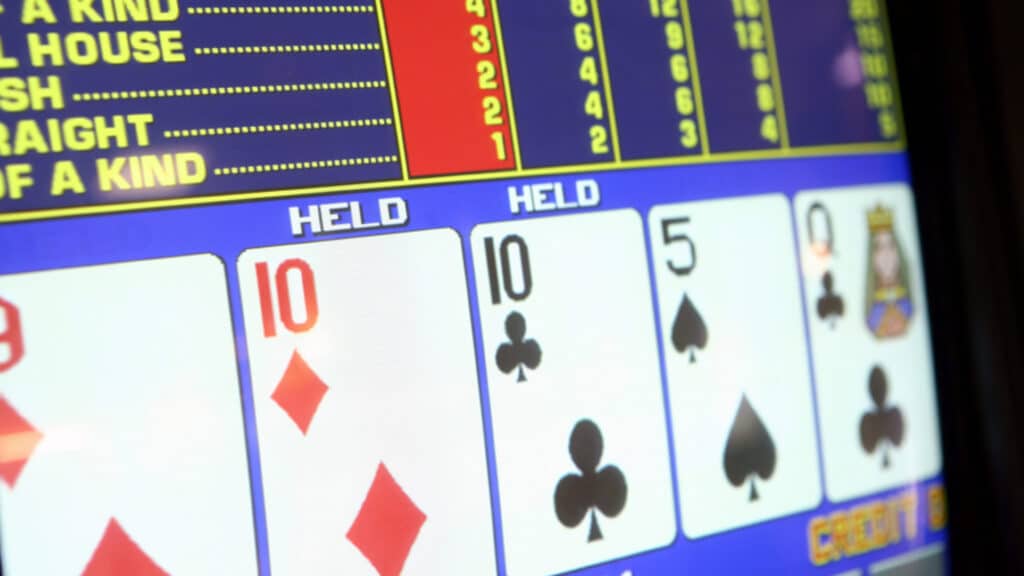Unlock your winning potential with online strategy charts. For both novice and seasoned gamblers, understanding and effectively using online strategy charts can significantly optimize your play, turning chance-based games into opportunities for more informed and strategic decision-making. This detailed guide delves into how to leverage these powerful tools across various online casino games, enhancing your understanding of probabilities, payouts, and optimal betting strategies.
Understanding the Essence of Online Strategy Charts
Online strategy charts are visual aids that present the mathematically optimal decisions for specific scenarios in casino games. They are typically tables or diagrams that cross-reference your hand or game state with the dealer's visible card or game parameters, guiding you on the best action to take—whether to hit, stand, double down, split in Blackjack, or which bets to place in Roulette or Baccarat. Rooted in probability theory and statistical analysis, these charts minimize the house edge, offering players a strategic advantage by ensuring every decision is mathematically sound, not just based on gut feeling. Strategy charts are not about guaranteeing wins every time, as the inherent randomness of casino games remains, but about maximizing your chances of winning and effectively managing your bankroll over time.
The Mathematical Foundation of Strategy Charts
At their core, strategy charts are built upon complex algorithms and simulations that calculate the expected value of each possible action in a game under various conditions. For games like Blackjack, this involves considering millions of simulated hands to determine the most profitable action—Hit, Stand, Double Down, or Split—for every combination of player hand and dealer upcard. These calculations take into account the rules of the game, including the number of decks, dealer's hitting rules (e.g., whether the dealer hits on soft 17), and payout ratios. In Roulette and Baccarat, strategy charts might focus on bet types and patterns that, while not changing the underlying odds, can guide bankroll management and betting decisions to align with statistical probabilities. The precision of these charts comes from rigorous mathematical modeling, making them reliable tools for players looking to enhance their strategic gameplay.
Benefits of Using Strategy Charts in Online Gambling
Employing strategy charts offers several key advantages for online gamblers. Primarily, they significantly reduce the house edge by guiding players to make mathematically optimal decisions. For example, in Blackjack, using a strategy chart can lower the house edge to less than 1% in many game variations, a substantial improvement over intuitive play. Strategy charts also serve as invaluable educational tools, especially for beginners, helping them quickly learn the rules and nuances of complex games like Blackjack or Poker variations. They provide a structured approach to learning, turning initial confusion into confident gameplay. Furthermore, by promoting informed decision-making, strategy charts help in better bankroll management. Players are less likely to make impulsive or emotionally driven bets, which are common pitfalls in gambling. Instead, they adhere to a strategic framework that encourages disciplined betting and minimizes potential losses, thereby extending playtime and increasing enjoyment, regardless of the immediate outcome.
Games Optimized by Strategy Charts
Strategy charts are not universally applicable to all casino games, but they are exceptionally effective in games where player decisions significantly impact the outcome. Blackjack, Video Poker, and certain variations of Poker are prime examples where strategy charts can be rigorously applied. In games of pure chance, like Roulette or Slots, their role is more about managing betting patterns and understanding payout structures rather than influencing game outcomes directly. Let's explore the games where strategy charts provide the most pronounced benefits.
Blackjack Strategy Charts: A Deep Dive
Blackjack strategy charts are perhaps the most well-known and widely used in online gambling. They are essential due to the game's blend of chance and decision-making. A typical Blackjack strategy chart is a table that dictates the optimal action—Hit, Stand, Double Down, Split, or Surrender—based on your hand and the dealer's upcard. These charts are meticulously crafted for different Blackjack variations, considering rules like the number of decks, dealer's rule on soft 17, and whether doubling after splitting is allowed. Using a Blackjack strategy chart can drastically reduce the house edge, sometimes to as low as 0.5%, depending on the game rules and chart accuracy. For example, a chart might advise you to always split Aces and 8s, stand on 17 or more, and hit on hands of 11 or less against any dealer upcard. Mastering and consistently using a Blackjack strategy chart transforms the game from a guessing game to a skill-based activity, significantly improving a player's odds of success.
Video Poker Strategy Charts: Maximizing Payouts
Video Poker, another game where strategy charts are highly effective, combines elements of slot machines and poker, requiring players to make decisions that affect the game's outcome. Unlike slots, Video Poker offers a degree of skill, and optimal play can substantially increase winnings. Strategy charts for Video Poker are game-specific, tailored to variations like Jacks or Better, Deuces Wild, or Bonus Poker, each having unique payout structures and optimal strategies. These charts guide players on which cards to hold and discard to form the best possible poker hand, maximizing returns based on the game’s pay table. For instance, in Jacks or Better, a strategy chart will detail whether to hold a single Jack, Queen, or King, or to discard all cards and redraw for a better hand, given the potential payouts for different hand rankings. By adhering to a Video Poker strategy chart, players can often play at near-even odds with the house, or in some cases, even gain a slight edge, particularly in full-pay versions of games like Deuces Wild.
Poker Strategy Charts: Strategic Gameplay in Poker Variations
In Poker variations like Texas Hold'em or Omaha, strategy charts are less about dictating exact moves and more about providing guidelines for pre-flop hand selection and betting strategies. Unlike Blackjack or Video Poker, Poker involves playing against other players, introducing psychological elements and game dynamics that strategy charts cannot fully capture. However, starting hand charts in Texas Hold'em are invaluable, especially for beginners. These charts rank starting hands and recommend actions (raise, call, fold) based on hand strength and position at the table. More advanced poker strategy charts might delve into betting frequencies in different scenarios, pot odds calculations, and strategies for different stages of a tournament or cash game. While poker strategy charts are not a substitute for experience and adaptability, they provide a solid strategic foundation, helping players make more informed decisions, manage risk, and understand when to play aggressively or cautiously. They are particularly useful in online poker environments where quick decisions are often required, and having a pre-calculated strategy can save time and reduce errors.
Implementing Strategy Charts in Your Online Play
Effectively using strategy charts involves more than just finding one online; it requires understanding, practice, and adaptation to different gaming scenarios. Here’s a guide to seamlessly integrate strategy charts into your online gambling sessions.
Finding and Understanding Reliable Strategy Charts
The internet offers a plethora of strategy charts, but not all are created equal. The key is to find charts from reputable sources that are specific to the game variation you are playing. Reliable sources often include gambling strategy websites, books on casino gaming, and sometimes even the online casinos themselves might offer basic strategy guides for games like Blackjack. When selecting a chart, verify that it matches the specific rules of the game you're playing – for Blackjack, note the number of decks, rules on dealer hitting on soft 17, and doubling rules. For Video Poker, ensure the chart corresponds to the exact pay table of the machine. Understanding a strategy chart involves knowing not just what action to take, but why. Many good charts come with explanations of the underlying logic, helping you learn the principles of optimal play rather than just rote memorization. Start with basic charts and gradually explore more complex ones as you become more comfortable and knowledgeable.
Step-by-step Guide to Using a Strategy Chart Online
Using a strategy chart during online play should be discreet and efficient. Here’s a step-by-step approach:
1. Choose the Right Chart: Before starting, select a strategy chart that accurately matches the game you are playing and its specific rules. Have it readily accessible, either printed out or open in another window.
2. Understand the Layout: Familiarize yourself with how the chart is organized. Typically, charts for Blackjack, for example, list your hand type along one axis and the dealer's upcard along another.
3. Identify Your Hand and Dealer's Card: In each game round, first, identify your current hand and the dealer's visible card.
4. Locate the Intersection: Find the intersection of your hand and the dealer's card on the strategy chart. The chart will indicate the recommended action—Hit (H), Stand (S), Double Down (D), Split (P), or Surrender (SU).
5. Execute the Recommended Action: Follow the chart's recommendation for your next move. In an online casino setting, quickly make your decision based on the chart to maintain the pace of the game.
6. Practice and Internalize: Initially, you might need to consult the chart for almost every decision. Over time, as you play more and consistently use the chart, you’ll start to internalize the strategies, reducing your reliance on the chart for every move.
7. Adapt and Adjust: Recognize that no strategy chart can account for every possible scenario, especially in games like Poker where opponent behavior is crucial. Use the chart as a foundation and learn to make slight adjustments based on game dynamics and your growing experience.
Common Mistakes to Avoid When Using Strategy Charts
While strategy charts are powerful tools, they are not foolproof, and mistakes in their use can negate their benefits. One common error is using the wrong chart. For instance, applying a strategy chart designed for a six-deck Blackjack game to an eight-deck game can reduce its effectiveness because optimal strategies vary with game rules. Another mistake is deviating from the chart based on hunches or emotions. Strategy charts are mathematically derived for long-term play; straying from them in the short term, hoping for better outcomes, usually increases the house edge. Also, players sometimes misinterpret the chart, especially when starting out. For example, misunderstanding when to 'stand' versus 'hit' in borderline situations. It's crucial to fully understand the chart's notations and recommendations. Finally, relying solely on strategy charts without understanding basic game rules is a mistake. Charts assume you know the rules and payouts of the game. Use strategy charts as a complement to your understanding of the game, not as a replacement for it.
Advanced Strategies and Chart Variations
As you become more proficient with basic strategy charts, exploring advanced strategies and chart variations can further refine your gameplay. These advanced approaches often involve considering more nuanced game conditions and psychological aspects, especially in games like Poker.
Conditional Adjustments to Basic Strategy
Basic strategy charts provide a solid foundation, but optimal play in many games can be further refined by making conditional adjustments based on specific game situations. In Blackjack, for example, card counting, though complex and often impractical in online casinos due to continuous shuffling, illustrates how adjusting strategy based on the composition of remaining cards can be advantageous. More practically, in Poker, adjusting pre-flop hand selection and betting strategies based on the number of players at the table (looser play in short-handed games, tighter in full ring) or the tendencies of your opponents are crucial conditional adjustments. Similarly, in Video Poker, understanding progressive jackpots and adjusting play to maximize chances when jackpots are high is a form of conditional strategy adjustment. These adjustments require a deeper understanding of game dynamics and are about tweaking the basic strategy to exploit specific, evolving conditions within the game.
Exploring Different Chart Variations for Specific Game Rules
The effectiveness of a strategy chart is intrinsically linked to the specific rules of the game it is designed for. For Blackjack, variations in rules such as 'Dealer hits on soft 17', 'Double after split allowed', 'Surrender options', and the number of decks significantly alter the optimal strategy. Consequently, numerous variations of Blackjack strategy charts exist, each tailored to these specific rule sets. Players should always seek out and use the chart that precisely matches the rules of the Blackjack game they are playing. Similarly, in Video Poker, strategy charts vary widely based on the pay table of the specific Video Poker machine. Games like 'Bonus Poker', 'Double Bonus Poker', and 'Deuces Wild' each require distinct strategy charts to optimize play due to their differing payout structures. Exploring and using these specific chart variations is crucial for maximizing strategic advantage and reducing the house edge as much as possible under different rule environments.
Integrating Psychological and Contextual Factors
While strategy charts provide a mathematically sound basis for decision-making, they primarily address the probabilistic aspects of casino games. In real-world gambling, especially in games involving interaction with other players like Poker, psychological and contextual factors come into play. In Poker, understanding opponent tendencies—are they aggressive or passive, bluffing frequently or rarely?—is as important as knowing which hands to play. Adapting your strategy based on these reads, alongside your chart-based knowledge of hand strengths and probabilities, is part of advanced play. Furthermore, bankroll management and risk tolerance are contextual factors that strategy charts do not address. A chart might suggest an aggressive play in a certain situation, but if you are playing with a limited bankroll, a more conservative approach might be wiser. Integrating these psychological and contextual considerations with strategy charts moves gameplay from purely mechanical to strategically nuanced, enhancing overall effectiveness and adaptability in diverse gambling scenarios.
Conclusion: Strategy Charts as a Tool for Smart Gambling
Online strategy charts are indispensable tools for anyone serious about optimizing their play in online casino games. They offer a pathway to transform gambling from a game of pure chance to a more calculated and strategic endeavor. By providing mathematically derived optimal decisions, strategy charts reduce the house edge, enhance learning, and promote disciplined gameplay. Whether you are a beginner just starting to explore Blackjack or Video Poker, or an experienced player looking to refine your strategic edge, understanding and utilizing strategy charts is crucial. However, remember that while strategy charts significantly improve your odds, they do not guarantee wins. Gambling inherently involves risk, and strategy charts are best used as a component of a broader responsible gambling approach. They empower you to make smarter decisions, manage your bankroll more effectively, and ultimately, enjoy a more skillful and potentially more rewarding online gambling experience. Embrace strategy charts not as a magic formula, but as a sophisticated tool in your gambling toolkit, enhancing your understanding and control in the exciting world of online casinos.
External Resources:



